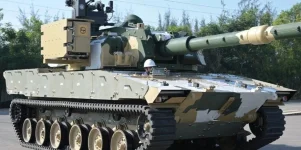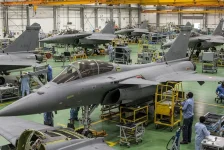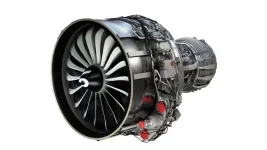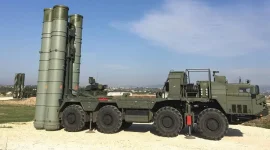- Views: 3K
- Replies: 17
A high-stakes competition has erupted among five major states—Karnataka, Maharashtra, Tamil Nadu, Uttar Pradesh, and Telangana—to become the manufacturing hub for India's prestigious Advanced Medium Combat Aircraft (AMCA).
As the nation pushes forward with this ambitious fifth-generation stealth fighter program, state governments are rolling out attractive incentives, including land, tax breaks, and access to a skilled talent pool, to secure a project that promises decades of economic growth and strategic prominence.
The AMCA program is a cornerstone of India's "Atmanirbhar Bharat" (self-reliant India) and "Make in India" policies, aiming to position the nation among the elite group of countries capable of producing their own advanced combat aircraft.
Developed by the Defence Research and Development Organisation's (DRDO) Aeronautical Development Agency (ADA), the twin-engine multirole fighter is designed to be a formidable asset for the Indian Air Force (IAF).
Featuring advanced stealth technology to evade enemy radar, supercruise capability to fly at sustained supersonic speeds, and a state-of-the-art avionics suite, the AMCA is India's answer to sophisticated aerial platforms in the region, such as China’s J-20.
The Cabinet Committee on Security approved the project in March 2024 with an initial budget of approximately ₹15,000 crore for the development of five prototypes.
The IAF has a projected requirement of around 250 aircraft, with production expected to commence in the early 2030s.
The winning state will not only host the primary manufacturing plant but also become the nucleus of a sprawling aerospace ecosystem.
The project is anticipated to generate substantial local employment, boost state revenues through GST collections, and attract a network of component suppliers, ensuring sustained economic activity for the next 30 to 40 years.
The Contenders and Their Pitches
Each state is leveraging its unique strengths to present a compelling case to the consortium of companies, led by a Special Purpose Vehicle (SPV), which will spearhead the aircraft's production.- Karnataka (Bangalore): As the established heart of India's aerospace industry and home to Hindustan Aeronautics Limited (HAL) headquarters, Karnataka is under significant pressure to keep the project. The state, which already accounts for over 65% of India's aerospace manufacturing, is offering land near Tumakuru. Its primary advantage is the close proximity to the Aircraft Research and Design Centre (ARDC), which is leading the AMCA's design and development.
- Maharashtra (Nashik): The HAL facility in Nashik is a powerful contender due to its existing, battle-tested infrastructure. The plant currently manufactures the Sukhoi Su-30 MKI and is set to roll out the first Tejas Mk1A aircraft. Proponents argue that upgrading this "brownfield" site would be significantly more cost-effective—potentially saving billions compared to a new facility—and would allow for a quicker transition to AMCA production around 2029 as the Tejas assembly line winds down.
- Tamil Nadu (Coimbatore): A key hub within the Tamil Nadu Defence Industrial Corridor, Coimbatore was an early favorite for a new, "greenfield" facility. Supported by a robust industrial base and a growing number of private aerospace firms, the state remains a strong candidate, emphasizing its capacity for large-scale, modern manufacturing.
- Uttar Pradesh (Lucknow): The state is promoting its own Defence Industrial Corridor, offering investor-friendly policies and access to a vast workforce. Lucknow is being positioned as a strategic location that can support the long-term logistical and manpower needs of such a large-scale defence program.
- Telangana (Hyderabad): A rapidly emerging aerospace and defence hub, Hyderabad is home to numerous DRDO labs and private firms like VEM Technologies, which already contributes to the Tejas fighter program. The state is highlighting its modern infrastructure and proactive industrial policies to attract the consortium.
The Final Decision: Cost vs. Scalability
The final decision rests with a special purpose vehicle (SPV) comprising HAL and its private partners. The consortium faces a critical choice between repurposing an existing facility and developing a new one.Converting the Nashik plant offers immediate cost savings and could accelerate the production timeline by leveraging existing infrastructure and expertise as the Tejas Mk1A programme concludes around 2029.
However, building a "greenfield" facility in states like Tamil Nadu, Uttar Pradesh, or Telangana provides the opportunity to create a larger, modern, and highly scalable aerospace ecosystem from the ground up, potentially incorporating integrated research, development, and testing centres. This long-term advantage may outweigh the short-term financial benefits of the Nashik option.
The selection, expected within the next few years, will be a defining moment for India's defence industrial base, balancing immediate costs against the long-term strategic vision for the nation's aerospace future.





